Buy 2-Day Certification Course -Trauma and Attachment Treatment for Children and Adolescents – Lois Ehrmann Course at GBesy. We actively participate in Groupbuys and are committed to sharing knowledge with a wider audience. Rest assured, the quality of our courses matches that of the original sale page. If you prefer, you can also buy directly from the sale page at the full price (the SALEPAGE link is directly provided in the post).
2-Day Certification Course -Trauma and Attachment Treatment for Children and Adolescents by Lois Ehrmann,
Salepage link: At HERE. Archive:
- Faculty:
- Lois Ehrmann
- Duration:
- 12 Hours 3 Minutes
- Format:
- Audio and Video
- Copyright:
- Jan 16, 2020
Description
Becoming a Certified Child and Adolescent Trauma Professional will demonstrate your passion for and knowledge of treating traumatized children and adolescents.
This 2-Day Certification Course in Trauma and Attachment Treatment for Children and Adolescents will provide you with the essential skills, proven interventions, and state-of-the-art treatments you need to successfully treat your most challenging clients—children, adolescents and families suffering from trauma and attachment wounds.
Children’s neurology is impacted at the deepest levels of development resulting in emotional, behavioral and psychological problems. When the foundational blocks of attachment are fractured, you face therapeutic roadblocks—innate distrust of others, acting out, avoidance/shutting down, extreme reactivity, self-harm, affect dysregulation, substance abuse, poor boundaries—making successful treatment seem impossible to achieve.
Purchase this intensive 2-day certification training and learn the most effective tools and techniques to help children and families more fully engage in treatment, identify and express their emotions, manage disturbing thoughts and feelings, and achieve and maintain recovery.
Elevate your practice and improve your ability to:
- Skillfully integrate proven interventions rooted in EMDR, IFS, Somatic Psychotherapy
- Unpack children’s history and create a cohesive trauma narrative
- Use children’s trauma narrative to process attachment disruptions and trauma responses
- Map children’s problematic behavior and the parent’s responses to the behavior
- Help children identify trauma triggers and develop appropriate, healthy regulation skills
- Help children overcome fears about connecting in relationships
- Repair self-destructive patterns, negative limiting beliefs and affect dysregulation
- Empower families to improve boundaries, discipline and communication
- Teach families/caregivers concrete, practical ways to repair attachment wounds
Best of all, you can become a Certified Child and Adolescent Trauma Professional (CATP) upon completion of this course—at no additional cost to you—adding valuable skills and credentials to your resume.
Purchase today and show your clients and their families with trauma and attachment wounds, that you’ve taken the time and effort to effectively help them heal!
Certification Made Simple
In just three easy steps, you can earn your certification as a Certified Child and Adolescent Trauma Professional.
- Step 1: Watch the digital seminar
- Step 2: Complete the CE test and instantly print your certificate of completion.
- Step 3: Submit your certificate of completion and professional license to Evergreen Certifications
That’s it! No hidden fees. No catch. Just certification made EASY.
*Professional Standards apply. Learn more at www.evergreencertifications.com/catp
Handouts
| Manual – Trauma and Attachment Treatment for Children and Adolescents (39.31 MB) | 198 Pages | Available after Purchase | |
| CATP Certification Details |
Outline
Attachment Theory and Attachment Therapy
- Recent influences in attachment theory and therapy
- Attachment importance in the development of the healthy individual
- Attachment styles vs. disorganized attachment
- Neuroscience supporting bottom-up therapeutic strategies
- DSM-5®: Classification of trauma and stressor-related disorders
Neurological Impact of Trauma and Attachment
- How the research informs treatment
- Trauma is stored/stuck in the right hemisphere
- Chronic activation of the fight/flight/freeze response (Amygdala issues)
- The reason for the stuckness
- Cortisol and its impact on cognitive impairment
Indicators of Trauma and Attachment Disruption
- Common diagnostic mistakes
- Characteristics of the children and adults
- View attachment as a continuum
Assessments for Trauma and Attachment Wounds: Case Studies and Video Sessions
- Protocol to assess the strength and health of the parental/caregiver system
- Most effective scales, measures and instruments
- Methods to explain the internal working model of the child to the parent/caregiver
- Diagnostic considerations/Differential diagnosis
- Complex Trauma, Complex PTSD, Developmental Trauma, Disorganized Attachment, Reactive Attachment Disorder
Translate Trauma and Attachment Goals into SMART Objectives
- Core treatment goals
- Relational factors between client/therapist and child/parent/caregiver
- Dismantling the individual’s unhealthy negative internal working model
- Increase the level of affective mastery
- Reduce distancing defenses
- Increase attachment within healthy relationships and for adults with their own children
- Containment of rage, anger and pain so that resolution can occur
- How to operationalize goals into measurable objectives
The Integrated Attachment and Trauma Timeline Strategy (IATTS): Help Children and Families Unpack Their History
- A guide to move from assessment to treatment
- Techniques to clarify and construct the client’s cohesive narrative
- Methods to “chunk” overwhelming and disorganized historical material
- Integrates with evidence-based treatment modalities
- Eye Movement Desensitization Reprocessing (EMDR)
- Internal Family Systems (IFS)
- Attachment-Focused Family Therapy
- Bibliotherapy
- Expressive Therapies and Somatic Psychotherapy
TECHNIQUES WITH CASE STUDIES: PUTTING IT ALL TOGETHER WITH PRACTICE TIME!
A Child Who Had No Safety
- A view of Attachment-Focused Family Therapy
- Healthy vs. disrupted attachment/bonding cycle
- Intersubjectivity and Attunement: What being in sync does/does not look like
- PACE: Playfulness, Acceptance, Curiosity and Empathy
- Co-regulation of affect and co-creation of experiences
When Traumatized Children are Broken into Many Parts
- Secure vs. anxious and avoidant attachment styles
- Disorganized attachment: Recognize the signs
- How attachment impacts parent-child dyads
- Integrate IFS into Attachment-Focused Family Therapy
- Parts work through sand tray, art strategies and puppetry
Full of Rage with No Where to Go
- Integrate EMDR into Attachment-Focused Family Therapy
- Teach parents and children resource tapping and positive self-talk
- Use tapping as part of imaginal nurturing
- Calming and self-regulating strategies from EFT
- Naming feelings with bilateral drumming
Parts that Children Wall Off
- Terrified of being terrified
- The freeze of the fight-flight-freeze trauma response
- Help children understand their own thoughts, feelings, behaviors and experiences
The Rage that Comes from Physical Abuse
- When children reenact the trauma of abuse
- See the positive intention in all parts
- Teach compassion, curiosity, calmness and connectedness through expressive therapies
When Parents and Children Both Have Activated Parts
- Activation Parts Map: Z-Process
- Naming and witnessing the activated parts
- Helping the parts understand each other
Protecting Sibling and Self in Foster Care
- Protector parts activity/worksheet
- Teach children to use their inner imagination to work with their part
- Transform terror into trust
Repair the Fracture with Adoptive Parents
- Clarify the trauma and negative internal working model
- Parts mapping: Teach parts concepts to children and parents
- Integrate Bibliotherapy into IFS
- Assist parents how to engage in self-led parenting
Other Trauma-Specific Evidence-based Treatment Modalities
- What they are used for and why clients seem to respond well
- Sensorimotor psychotherapy
- Mindfulness-based approaches including breath work and imagery
- Biofeedback and EEG Biofeedback
- Limitations of the related research and risks of each approach
Faculty

Lois Ehrmann Related seminars and products: 5
The Individual and Family Choices program
Lois Ehrmann, PhD, LPC, NCC/ACS, is the founder & executive director of The Individual and Family Choices Program in State College, Pennsylvania. She has over 32 years of professional counseling experience and over 18 years of clinical supervision experience. She holds the following credentials: Clinical Supervisor (ACS) & National Certified Counselor (NCC), Registered ATTACh Clinician, Certified Attachment Focused Family Therapist, Certified IFS (CSL) Therapist, Certified EMDR Clinician & Approved Consultant (EMDRIA), and Certified Trauma Specialist (CTTS).
She is also an affiliated assistant professor at Penn State University in the Department of Counselor Education & Supervision since 2004. In the most recent years of teaching she has focused on skill development in masters level counselors and clinical supervision skills for doctoral level professional helpers. Lois is a sought after clinical supervisor in her geographic area and thoroughly enjoys teaching and mentoring new clinicians.
Speaker Disclosures:
Financial: Lois Ehrmann is founder and executive director of The Individual and Family CHOICES Program. She receives a speaking honorarium from PESI, Inc.
Non-financial: Lois Ehrmann has no relevant non-financial relationship to disclose.
Buy the 2-Day Certification Course -Trauma and Attachment Treatment for Children and Adolescents – Lois Ehrmann course at the best price at GBesy.. After your purchase, you will get access to the downloads page. You can download all the files associated in your order at here and we will also send a download notification email via your mail.
Unlock your full potential with 2-Day Certification Course -Trauma and Attachment Treatment for Children and Adolescents – Lois Ehrmann courses. our courses are designed to help you excel.
Why wait? Take the first step towards greatness by purchasing 2-Day Certification Course -Trauma and Attachment Treatment for Children and Adolescents – Lois Ehrmann courses today. We offer a seamless and secure purchasing experience, ensuring your peace of mind. With our trusted payment gateways, Stripe and PayPal, you can confidently complete your transaction knowing that your financial information is protected.
Stripe, known for its robust security measures, provides a safe and reliable payment process. With its encrypted technology, your sensitive data remains confidential throughout the transaction. Rest assured that your purchase is protected.
PayPal, a globally recognized payment platform, offers an additional layer of security. With its buyer protection program, you can feel confident in your purchase. PayPal ensures that your financial details are safeguarded, allowing you to focus on your learning journey.
Is it secure? to Use of?
- Your identity is completely confidential. We do not share your information with anyone. So it is absolutely safe to buy the 2-Day Certification Course -Trauma and Attachment Treatment for Children and Adolescents – Lois Ehrmann course.
- 100% Safe Checkout Privateness coverage
- Communication and encryption of sensitive knowledge
- All card numbers are encrypted using AES at relaxation-256 and transmitting card numbers runs in a separate internet hosting atmosphere, and doesn’t share or save any data.
How can this course be delivered?
- After your successful payment this “2-Day Certification Course -Trauma and Attachment Treatment for Children and Adolescents – Lois Ehrmann course”, Most of the products will come to you immediately. But for some products were posted for offer. Please wait for our response, it might take a few hours due to the time zone difference.
- If this happens, please wait. The technical department will process the link shortly after. You will receive notifications directly by e-mail. We appreciate your wait.
What Shipping Methods Are Available?
- You will receive a download link in the invoice or YOUR ACCOUNT.
- The course link always exists. use your account to login and download the 2-Day Certification Course -Trauma and Attachment Treatment for Children and Adolescents – Lois Ehrmann course whenever you need.
- You only need to visit a single link, and you can get all the 2-Day Certification Course -Trauma and Attachment Treatment for Children and Adolescents – Lois Ehrmann course content at once.
- You can do your learning online. You can be downloaded for better results and can study anywhere on any device. Make sure your system does not sleep during the download.
How Do I Track Order?
- We always notice the status of your order immediately after your payment. After 7 days if there is no download link, the system will automatically complete your money.
- We love to hear from you. Please don’t hesitate to email us with any comments, questions and suggestions.
![GBesy [GB] GBesy [GB]](https://www.gbesy.com/wp-content/uploads/2023/05/gbesy-Logo-full-100.png)
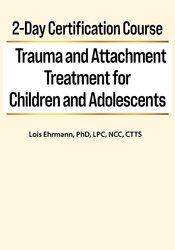

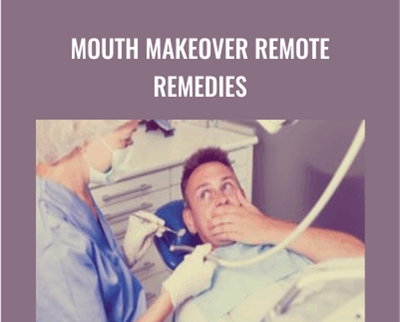
 Purchase this course you will earn
Purchase this course you will earn 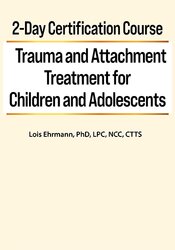
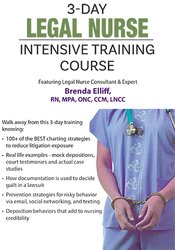
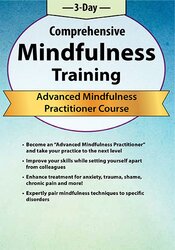
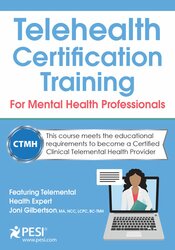
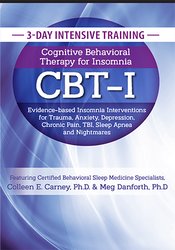
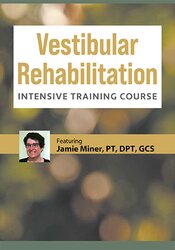
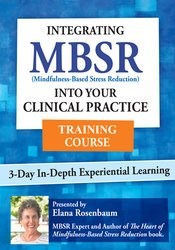
Reviews
There are no reviews yet.